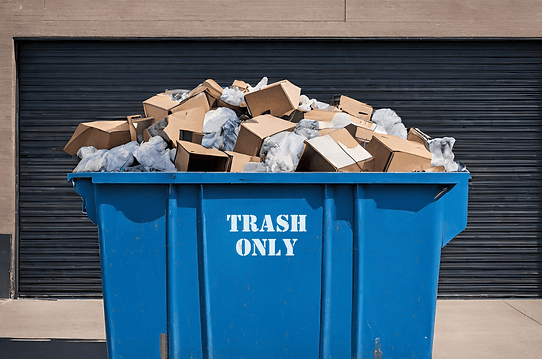Key Takeaways:
- Understand the significant impact of cardboard waste and the essential role of recycling in conserving resources and energy.
- Explore how consumer behavior and business practices influence the effectiveness of cardboard recycling.
- Gauge the influence of technology and economy on the recycling industry and how they can promote sustainable practices.
- Learn about the legislative framework surrounding recycling and how it shapes how we manage cardboard waste.
- Discover steps to encourage a sustainable cardboard usage and recycling cycle to preserve our environment.
Table of Contents:
- Understanding Cardboard Waste and Recycling
- The Lifecycle of Cardboard
- The Role of Consumers in Cardboard Recycling
- Commercial Cardboard Recycling: Challenges and Opportunities
- Technological Advances in Cardboard Recycling
- The Global Picture: Cardboard Recycling Rates and Trends
- Legal and Regulatory Considerations in Cardboard Recycling
- The Economic Benefits of Cardboard Recycling
- Addressing the Myths Around Cardboard Recycling
- Moving Forward: Encouraging Sustainable Cardboard Usage and Recycling
Understanding Cardboard Waste and Recycling
Every year, the world consumes a staggering amount of cardboard for packaging and shipping, leading to extensive waste that poses a significant environmental issue. As online commerce continues to expand, the demand for cardboard rises, consequently increasing the need for effective recycling programs. It’s crucial to process these materials properly to conserve resources and energy. The process of cardboard recycling is integral to reducing this waste, as it allows for cardboard to be reutilized in manufacturing, thereby cutting down the need for new resources and reducing the carbon footprint associated with production.
The Lifecycle of Cardboard
Understanding cardboard’s lifecycle is critical to grasping its environmental impact. From harvesting pine or birch trees, the primary sources of the cellulose fibers used in cardboard production, to the processing and eventual transformation into the final product, every stage consumes energy and resources. Once cardboard has fulfilled its initial purpose, it must be diverted from landfills. Effective recycling processes grind down the fibers into a pulp that can be reformed into new paper products, thus concluding one cycle and beginning a new one without excessive waste.
The Role of Consumers in Cardboard Recycling
While commercial entities produce a significant portion of cardboard waste, consumers are the linchpin for the success of recycling programs. Households that actively sort their waste and ensure that clean, dry cardboard is placed in recycling bins play a crucial role. These consumer habits can drastically improve the quality of the recycled material and ensure that it does not end up in a landfill. Moreover, consumers who prefer products with minimal or recyclable packaging send a powerful message to manufacturers about the demand for sustainable practices.
Commercial Cardboard Recycling: Challenges and Opportunities
Commercial entities face numerous challenges when it comes to recycling cardboard. Effective management solutions are necessary because of the enormous amount of trash enterprises produce, especially those in the transportation and retail industries. Yet within this challenge lies the opportunity to engage in cost-saving measures, implement innovative waste management systems, and contribute to corporate social responsibility initiatives. Businesses can navigate these challenges by partnering with waste management companies specializing in cardboard recycling and creating a more sustainable operation model.
Technological Advances in Cardboard Recycling
Thanks to technological advancements, the recycling industry has seen vast improvements. Modern machinery and sorting techniques have increased the efficiency of processing cardboard. One particular area of interest is the ability to recycle cardboard previously deemed non-recyclable due to contamination with food or oils.
The Global Picture: Cardboard Recycling Rates and Trends
Cardboard recycling rates vary globally, often reflecting each country’s environmental policies, infrastructure, and public awareness. Nations with high recycling rates have set precedents through developing efficient collection systems, investing in recycling technology, and fostering a culture that values sustainability. These trends provide valuable insights for countries striving to improve their recycling programs and can profoundly impact global cardboard waste reduction.
Read also Taming the Mobile Beast: Mastering Enterprise Mobility Management
Legal and Regulatory Considerations in Cardboard Recycling
Legislation plays a critical role in the success of recycling initiatives. Governments can significantly influence how cardboard is treated after its primary use by setting strict waste management guidelines and offering incentives for sustainable practices. With laws supporting the mandatory recycling of cardboard and other materials, businesses and consumers are guided toward better environmental stewardship.
The Economic Benefits of Cardboard Recycling
The benefits of cardboard recycling extend beyond environmental conservation, as notable economic advantages exist. By diverting cardboard from waste streams into recycling, municipalities save on landfill costs while generating income from the sale of recyclable materials. Furthermore, recycling generates employment in various sectors, from collection to processing, thus fueling the economy and fostering a circular economic model.
Addressing the Myths Around Cardboard Recycling
Misunderstandings regarding cardboard recycling can deter individuals and businesses from participating in recycling programs. Common myths assert that all cardboard contaminated with food is unfit for recycling or that the energy costs of recycling eliminate the environmental benefits. Such misconceptions are increasingly being dispelled as recycling facilities adapt to processing a broader range of materials and the public becomes better educated about the actual benefits of recycling.
Moving Forward: Encouraging Sustainable Cardboard Usage and Recycling
While challenges remain, the path forward is clear. Consumers, businesses, and governments must work together to manage cardboard waste effectively and sustainably. Public education and corporate responsibility programs can promote sustainable consumption patterns, while innovation in recycling technology will streamline the recycling process. The shared objective is a future where cardboard recycling is a routine practice worldwide, with significant reductions in environmental impacts and economic gains.

